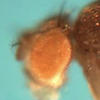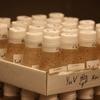in vivo fly RNAi
2016
Sep
23
DRSC & TRiP at TAGC 2016
Beta-testing a "Drosophila Protocols Portal"
2016
Sep
28
. 2012. “FlyRNAi.org--the database of the Drosophila RNAi screening center: 2012 update.” Nucleic Acids Res, 40, Database issue, Pp. D715-9.Abstract
. 2010. “In vivo RNAi: today and tomorrow.” Cold Spring Harb Perspect Biol, 2, 8, Pp. a003640.Abstract
. 2015. “The Transgenic RNAi Project at Harvard Medical School: Resources and Validation.” Genetics, 201, 3, Pp. 843-52.Abstract
. 2013. “The evolutionarily conserved protein CG9186 is associated with lipid droplets, required for their positioning and for fat storage.” J Cell Sci, 126, Pt 10, Pp. 2198-212.Abstract
. 2011. “False negative rates in Drosophila cell-based RNAi screens: a case study.” BMC Genomics, 12, Pp. 50.Abstract
. 2013. “UP-TORR: online tool for accurate and Up-to-Date annotation of RNAi Reagents.” Genetics, 195, 1, Pp. 37-45.Abstract
. 2012. “RNAi screening: new approaches, understandings, and organisms.” Wiley Interdiscip Rev RNA, 3, 2, Pp. 145-58.Abstract
. 2006. “Evidence of off-target effects associated with long dsRNAs in Drosophila melanogaster cell-based assays.” Nat Methods, 3, 10, Pp. 833-8.Abstract
. 2014. “A regulatory network of Drosophila germline stem cell self-renewal.” Dev Cell, 28, 4, Pp. 459-73.Abstract
. 2012. “Control of proinflammatory gene programs by regulated trimethylation and demethylation of histone H4K20.” Mol Cell, 48, 1, Pp. 28-38.Abstract



